While the babirusa remains an obscure animal for the general public, it seems to have a cult following among biologists, mammal geeks and extreme wildlife travelers.
Indeed, the babirusa is certainly one of the world’s most extraordinary animals. It is found only on remote forested islands, where it evolved in isolation. It still has much mystery surrounding its life history and habits.
And it has those tusks, those unreal tusks. No other mammal has anything quite like them.
But even those tusks aren’t enough to protect babirusas from people. Deforestation and poaching have led to a long-term decline. Can conservationists protect this remarkable species?
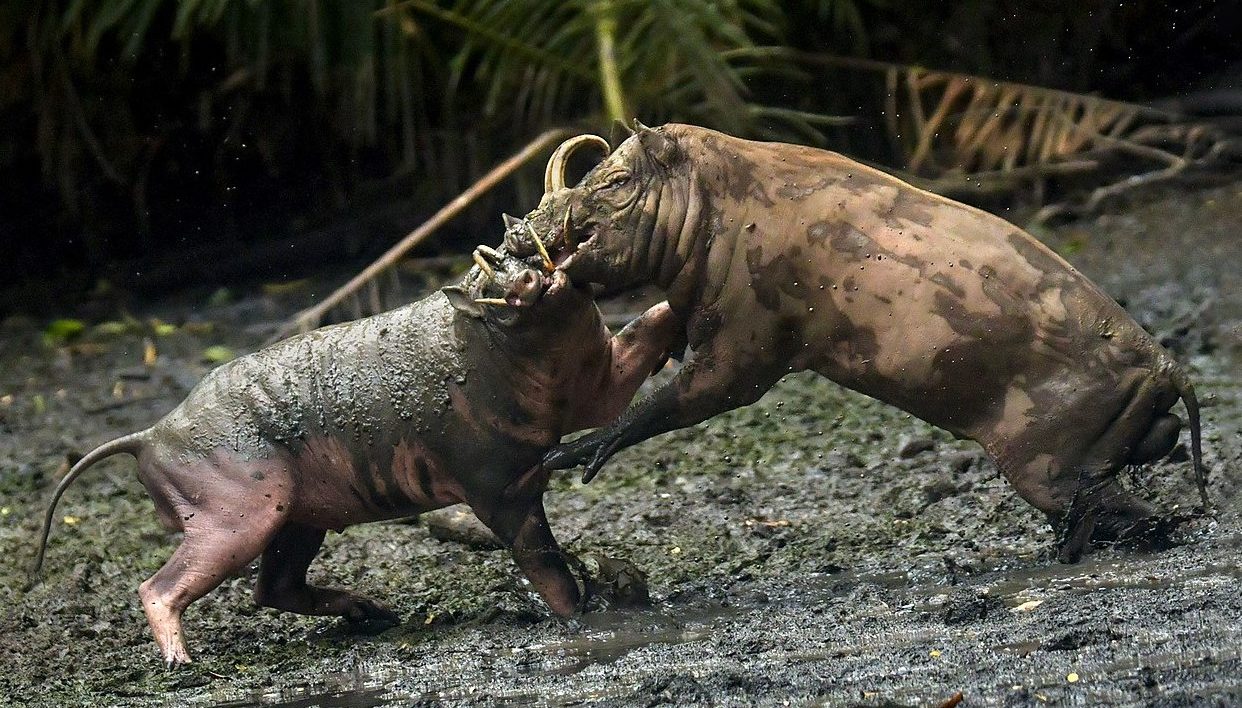
Meet the Babirusa
The babirusa, a wild member of the pig family Suidae, lives in isolated parts of the Indonesian island of Sulawesi as well as several nearby islands. It roams in large herds in the forest, and is now mainly restricted to protected areas.
There has been a lot of research into the evolution and taxonomy of babirusas. The current thinking is that there are actually four species. Darren Naish of Tetrapod Zoology offers the definitive account of babirusa biology with his multi-part series covering everything from taxonomy to evolutionary history to unusual habits. I highly recommend his blog for a more detailed look at the animal.
The most well-known babirusa species (Babyrousa celebensis ) is found on Sulawesi. This is the one with such sparse hair that it appears naked. It also has those looping tusks.
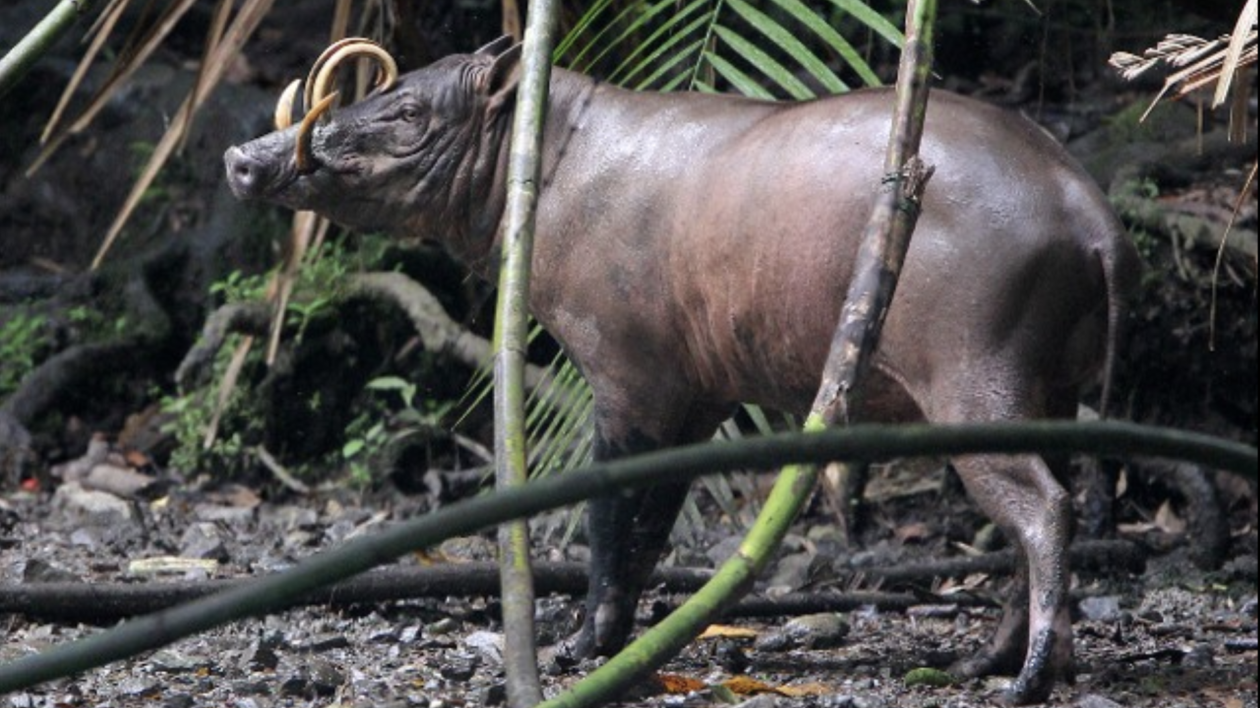
It is those tusks that are the most notable feature of the animal. Only males have them. The two upper canines penetrate through the snout’s skin and curve back towards the forehead. The lower canines also grow upwards. The babirusa is the only mammal with vertically growing canine teeth.
Unsurprisingly, babirusa tusks have inspired a lot of folkore and tall tales. A popular story is that those upper tusks, if not worn down, eventually grow back into the skull, killing the unfortunate babirusa. This always seemed more tall tale than biological reality.
But Darren Naish found at least one example where this actually happened. Ouch.
What is the purpose of those tusks? That seems to be one of the ongoing mysteries of the babirusa.
There is a popular (but untrue) story that babirusas use the tusks to hang from trees to wait quietly until a female passes by.
Others suggest that the babirusa uses its tusks to clear brush for females and young. However, given that females often travel without males, this seems unlikely.
What about fighting? The St. Louis Zoo offers this explanation:
A more plausible explanation was proposed by John McKinnon in 1981. His studies suggest that males developed this extraordinary set of upper tusks to protect the eyes and throat from the slashing lower tusks of competing males. This alternative use of the tusks was made possible by the fact that when the babirusa’s ancestors arrived on Sulawesi they faced a predator-free environment. Without strong selection pressure to develop and maintain anti-predator mechanisms, the tusks were suddenly ‘free’to be modified for other uses. The greatest physical threat to the ancestral babirusa boars was no longer predation, but competition. Rival boars armed with dagger-like tusks and surly dispositions posed a serious hazard to the average babirusa boar come-a’courtin.
Naish isn’t so convinced. The existing photos of babirusa fights show that males don’t hook tusks at all. Instead they rear up on hind legs and “box” each other with their front hoofs.
Perhaps those tusks display genetic fitness to potential mates, a version of the peacock’s tail. The reality is, we don’t know. It’s one of those many wildlife mysteries still waiting to be solved.
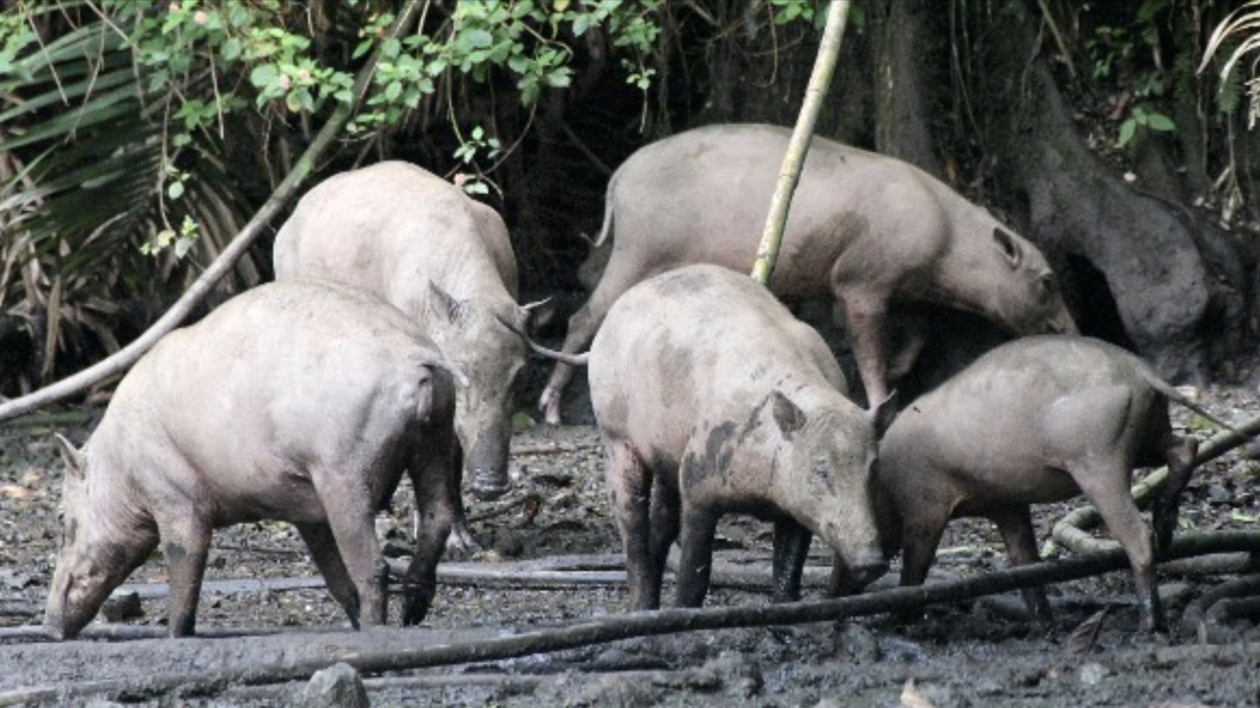
Babirusa Conservation
People first colonized Sulawesi some 30,000 years ago, and likely began hunting and eating babirusas soon after. Prehistoric remains show that babirusas formed a main part of the human diet.
People may have also introduced babirusas to other islands in the area, explaining the somewhat patchy distribution of the animal on various nearby Indonesian islands.
Logging changed the balance. It not only eliminated habitat, it also provided easier access to babirusas via roads and trails. Despite official protection, thousands of babirusas were killed for meat in the 1980s and 1990s.
Deforestation continues, eliminating more habitat and making more areas accessible to poachers.
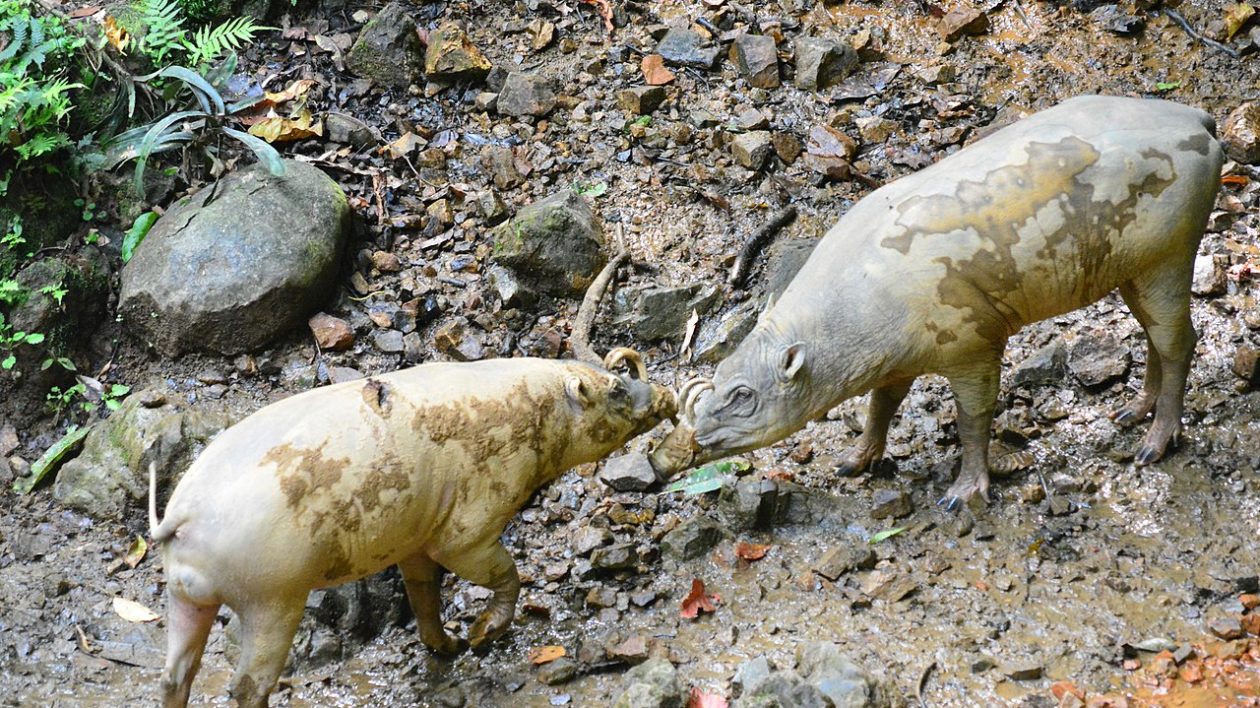
Sulawesi has some large protected areas, and initially, conservationists thought those reserves would be enough to protect a viable babirusa population.
But Sulawesi’s nature reserves follow a familiar script for protected areas. In short, they aren’t enough. It turns out that babirusa herds have a quite large home area. As such, in some protected areas only one herd may roam.
With the protected areas isolated from each other, babirusa herds have no ways to interbreed. The island of Sulawesi is thus broken into islands of habitat. This is bad for the long-term survival of the species.
The best solution is to provide habitat corridors that connect protected areas. This would allow genetic exchange among now-isolated herds. But such corridors would have to take into the needs of people who live around the reserves.
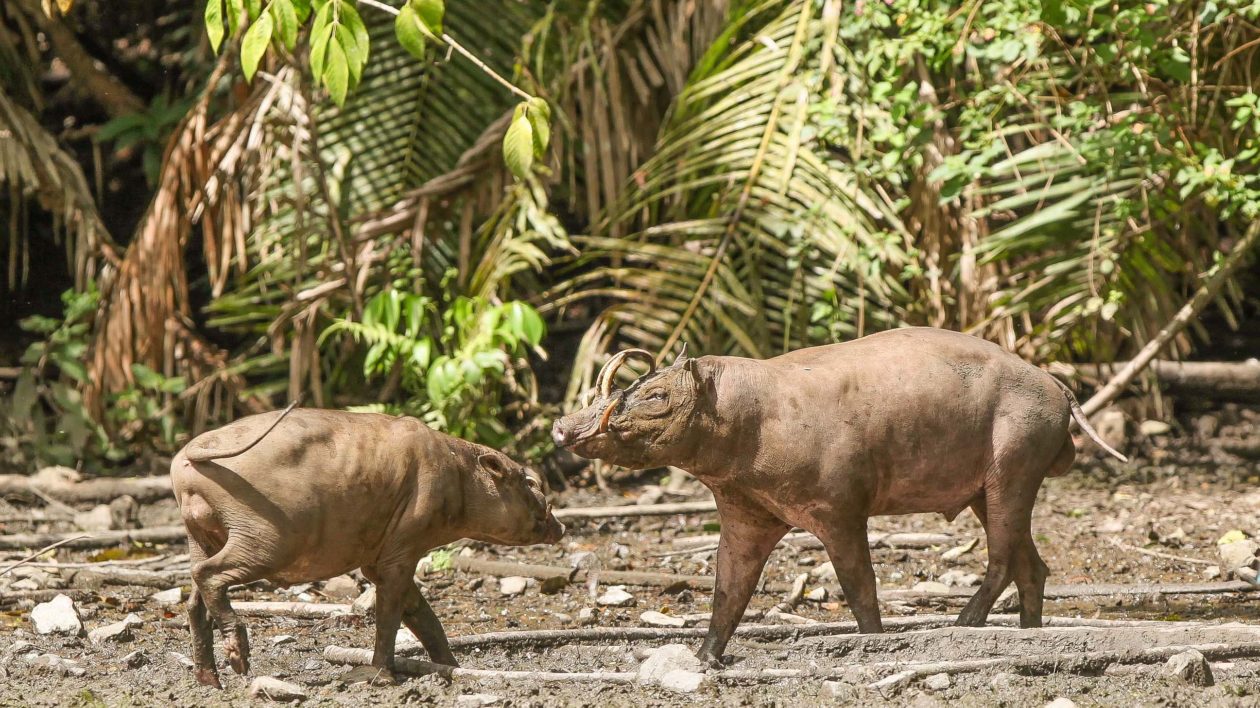
Spotting a Wild Babirusa
Babirusas are found in a number of zoos in the U.S. and Europe. But to see a wild one, you have to go Indonesia. And the best place there is the Nantu National Nature Preserve.
At Nantu, the animals gather at mineral licks in the forest, where they can be observed and photographed from a blind. Anoas – known by some as “midget buffalo” – and other cool mammals and birds also visit these forest openings.
My friend Jon Hall, who has likely seen more wild mammals than anyone, considers the babirusa to be one of the world’s greatest mammals. Jon goes to any length to see species in the world’s most remote regions. Last year, he joined equally hard-core naturalists Coke and Som Smith on a journey to Nantu. The photos from their trip illustrate this blog.
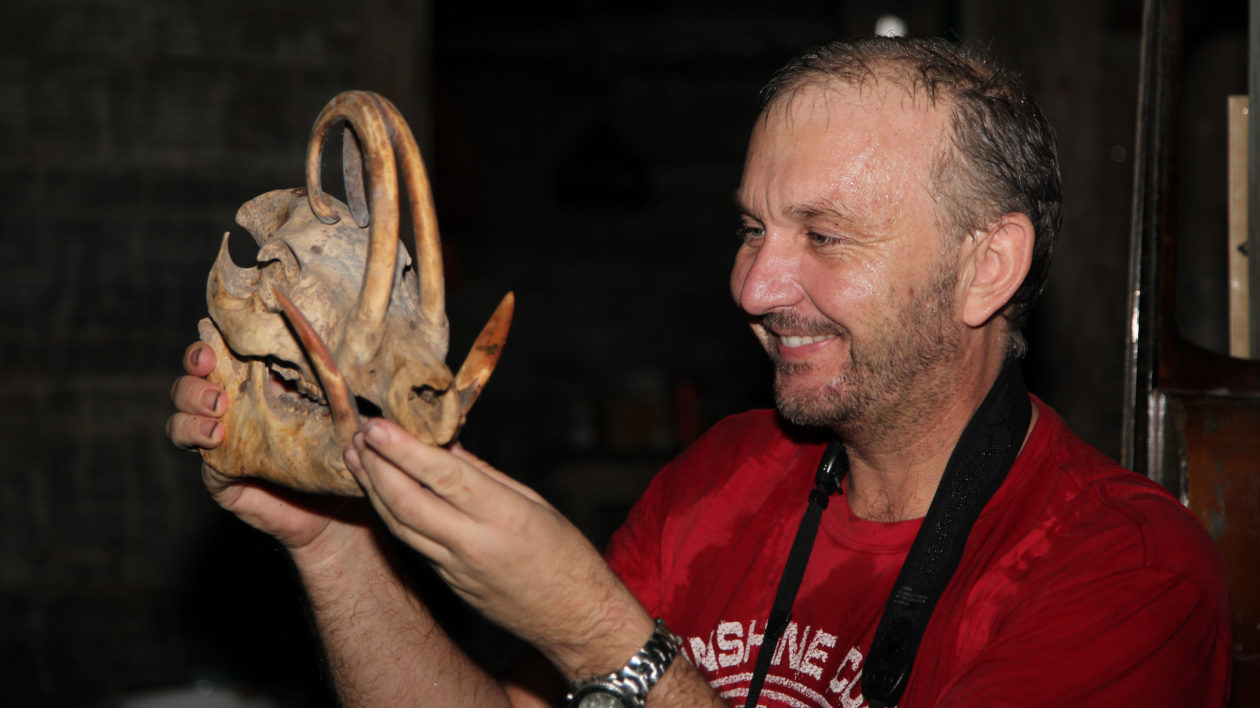
It’s not an easy trip, as their trip stories suggest. It requires arduous travel, crossing fast-moving rivers on foot, hiking rough trails and hiding in cramped blinds inhabited by biting ants. And the babirusa can be pretty wary, as Coke Smith writes:
The Babirusa are very sensitive to any noises in the forest. Often we would see the pigs react to approach of another of their species as if it were a leopard or another threatening predator. Often when entering the mineral lick, they would stick their Aardvark-like snouts high into the air and sniff the forest for threatening scents. We were advised not to use mosquito spray or perfume of any sort, as it would most likely scare away the Babirusa. On at least a couple occasions, they would sniff the air in our direction, and scurry off back into the forest.
Still, the reward should be apparent for any serious naturalist.
Hundreds of farmers live adjacent to the Nantu reserve, and undoubtedly there will be pressures on it in the future. Ecotourism, run responsibly, could provide income for people near the reserve, leading to better protection. Activities like babirusa spotting may offer the best hope for the long-term survival of the babirusa and the forest upon which it depends.
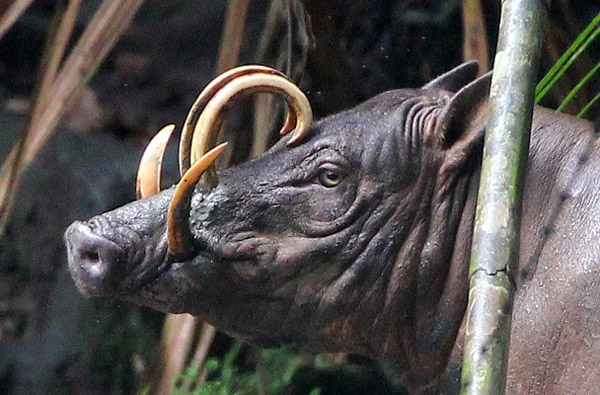



How wonderful to read of the babirusa species! Thank you so very much for this article, and the pictures. I enjoyed it very much.
What if there is no reason at all for them? What if the reason is that it was just a genetic mutation that has no actual purpose, and somehow became a spread trait?
Thank you for this incredible information. I have never heard of or seen such an interesting and gorgeous animal!
The esense of this article should encourage local students in Sulawesi to build knowledge and passion toward Sulawesian wildlife species. Big thanks should go to Lynn Clayton through YANI (Adudu-Nantu International Foundation) who has been laboriously working for decades on Nantu to provide a safe heaven for the babirusas and many Sulawesian native species. The area is currently under pressure for mining and agriculture.